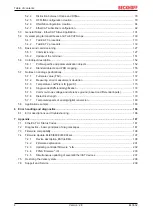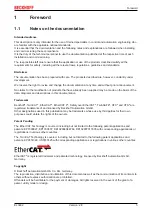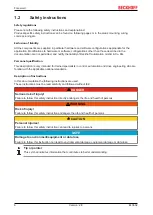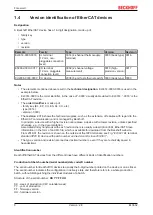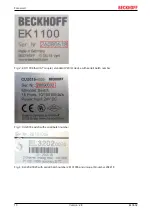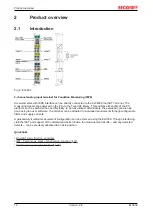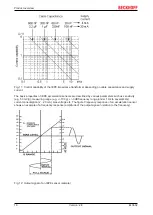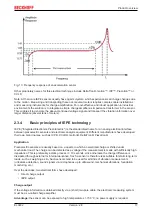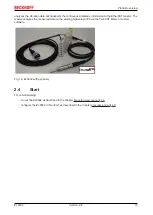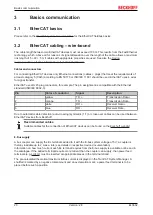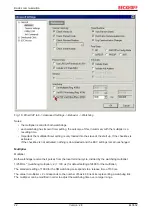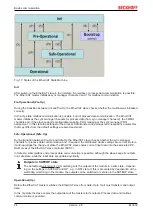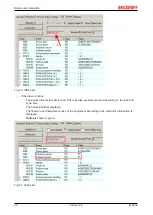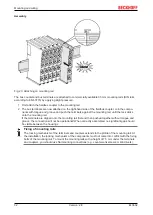
Product overview
EL3632
17
Version: 2.8
Fig. 13: Frequency response of an acceleration sensor
Other proprietary names for this electrical technique include DeltaTron®, Isotron™, ICP™, Piezotron™ or
CCLD
Note: At their core IEPE sensors usually have quartz crystals, which experience small charge changes due
to the motion. Measuring and transporting these over several meters requires complex cable installations
and measuring instruments for charge amplification. For cost-effective and robust application in industrial
environments the solution is to integrate a simple charge amplifier as impedance transformer in the sensor.
This enables it to generate the above-mentioned voltage signal and transport the vibration information over
larger distance (several tens of meters).
2.3.4
Basic principles of IEPE technology
IEPE ("Integrated Electronics Piezo-Electric") is the standardized name for an analog electrical interface
between piezoelectric sensors and electronic analysis equipment. Different manufacturers have developed
their own brand names, such as ICP®, CCLD®, Isotron®, DeltaTron®, Piezotron®.
Application
Piezoelectric sensors are usually based on a quartz, in which an electrical charge is shifted under
mechanical load. The charge can be detected as a voltage if the measurement is made with sufficiently high
impedance. This is preferably a static process << 10 seconds, since otherwise the charge difference is
dissipated through external or internal derivative. Such a sensor is therefore less suitable for static long-term
loads, such as weighing a silo. Such sensors tend to be used for all kinds of vibration measurements
(unbalance detection, sound signals via microphones up to ultrasound, mechanical vibrations, foundation
monitoring, etc.).
Over the decades, two electrical forms have developed:
• Direct charge output
• IEPE output
Charge output
If the voltage information is obtained directly via a (short) two-pole cable, the electronic measuring system
must be a so-called charge amplifier.
Advantage:
the sensor can be exposed to high temperatures > 150 °C; no power supply is required.


